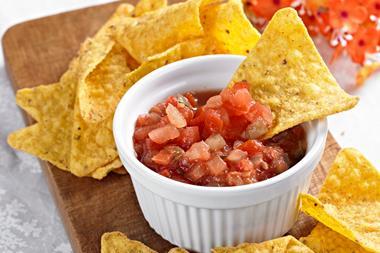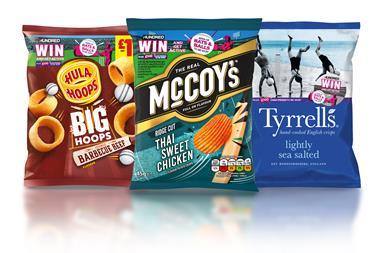Years of dwindling sales of French wine were expected to culminate this month with it losing its second place to the US. But, according to The Grocer's exclusive research from ACNielsen, French wine in the UK off-trade is back in growth.
It may only be 0.9% [MAT to w/e 30 December 2006], but it reverses last year's 3% decline and suggests a French wine revival could be on the cards.
The rise in value gives France an 18% share of the market, behind Australia at 24% , but ahead of the USA which saw the biggest sales growth, up 8.6%, and market share up to 16.3% (see table right).
While sales of Australian wine also grew, up 4% year-on-year, this was considerably slower than the 9% increase the previous year, indicating that consumers may be switching allegiance.
"If you look at French customs statistics, the progression is even better - up 5.3% in value," says Chris Skyrme, head of PR for wine at Sopexa, the generic body promoting French wines in the UK.
"France is leader in the premium sector with one wine in four positioned in the £5-plus price segment, according to ACNielsen."
There were several factors behind the turnaround, including the 2005 vintage, the growing popularity of rosés from Provence and the new dry varieties from Alsace.
France is also showing signs of finally waking up to the importance of brands, which could bolster its future performance. With the Vignobles de France label now allowing producers to blend Vin de Pays wines from different regions for the first time, wine-makers can reduce the amount of unsold wine by switching supply from different areas without confusing consumers and will also pave the way for a large-scale French wine brand.
The research also showed reason for cheer in other countries. New Zealand wines, including premium-priced Sauvignon Blancs and Pinot Noirs, continue to win favour with consumers to the tune of a 14.7% increase in value , although this is a slow-down over last year's impressive 44% .
Chris Yorke, global marketing director of New Zealand Winegrowers, says: "We believe there is still a strong demand for New Zealand wines in the UK that is not met by supply"
Italy also did well, up 7%. The biggest loser was South Africa, down 11% in value. A strong rand made it difficult for brand owners to support their wines with marketing initiatives and promotions, and two of the country's biggest brands, Kumala and Arniston Bay, recently changed importers.
"Kumala and Arniston Bay have experienced a transitional period," says Jo Mason, market manager at Wines of South Africa UK. "This has affected sales - Kumala has a significant share of the overall market for South Africa, so the category shares the brand's issues."
Germany also continued its seemingly inexorable decline, down 8%.
However, Wines of Germany is still upbeat about the future and is determind that German wines can turn the corner.
Nicky Forrest, Wines of Germany MD, says: "A closer analysis of volume by price band reveals that sales are moving in the right direction.
"The decline has been greatest in the below £3 price band, which accounted for a large proportion of sales in the past.
"German wines priced £3-plus have grown by 120% over the past two years, with particularly strong growth in the £6-£7 (66%) and the £4-£5 (8%) sectors."
Forrest adds: "Although not yet great enough in value to compensate for the loss in sales at the lower end of the market, they prove there is a growing market for quality German wine in the UK."
Argentina also had a bad year, dropping 11%, but James Forbes, UK director, Wines of Argentina, is confident the market will see an improvement.
"Interest from the trade is incredible at the moment - wine quality is at an all-time high and getting better with every vintage; foreign exchange rates are highly favourable; and consumer interest in all things Argentinian has never been stronger."
Back at the top of the table, the UK's taste for New World wines obviously continues.
However, with harvests hit by drought affecting prices, some vintners reporting customer concerns about wine miles, and the French finally showing signs of waking up to brands, we can only wonder what the future holds for French wines. n
Australia
?Typically upbeat, promotional board Wine Australia says the industry is responding to changing consumer tastes with the planting of more diverse varietals, such as Pinot Gris, Viognier and Sangiovese, and is optimistic about its future in the UK market. "Australia produces some fantastic cool-climate wines of elegance, structure and balance, for example Clare Valley Riesling. However, let's not forget the loyal customer base, which is still very pleased and seek out the full-bodied, fruit-driven styles we are known for and which we will continue to produce," says Melissa Worthington, marketing and communications manager, Wine Australia UK.
France
?"The strong comeback is partly down to Bordeaux and the 2005 vintage, which is of particularly good quality," sa ys Chris Skyrme,
head of PR - wine, Sopexa. "There has also been a good increase on appellations such as Provence, up 25% by value last year, and Alsace, up 20% . And we have seen the success of new ranges such as the premium Tesco range, where French wines are fairly important. Blason de Bourgogne is probably the best example of a brand success in the over £5 segment, where we need to develop more brand presence."
US
?Driven primarily by Californian wine, the
US is reaping the
rewards of having two of the strongest wine brands on its team with Blossom Hill and Gallo. Gallo Family Vineyards performed particularly well in the UK off-trade this year, up 24% across the whole portfolio. But the sector again failed to overtake France . "I think we will overtake next year as we are beginning to achieve more recognition of California as a region in the retailers," sa ys John McLaren, UK director, The California Wine Institute. "It's important to get that recognition and California is important and diverse enough a region to warrant it. We need to get consumers thinking about 'shopping California' and that will really allow us to push the mid-range £6-to-10 wines."
Italy
?The Italian industry is reporting increasing interest in the UK for its indigenous varietals, particularly those from the south of the country. That doesn't mean sales of Pinot Grigio, the surprise success story of the past few years , have suffered . Innovation, such as the development of pink Pinot Grigio, has helped keep consumer interest. The sheer variety - and lack of brands - in Italy is still causing problems, and work is afoot to simplify Italian labelling. The Italian Trade Commission says it will maintain its strategy of education in order to maintain growth through 2007.
South Africa
?A weaker rand and emerging brands are tipped to turn around the category's performance in 2007. "We have an exciting campaign for South Africa, Variety is in Our Nature," sa ys Jo Mason, Wines of South Africa's new market manager. "We have also just begun working with Seal Communications to develop an 18-month PR drive . We are developing a strong advertising initiative and are in discussions with all major retailers to determine the best way of ensuring consumers develop a positive perception of South African wines."
Spain
?Spanish producers are preparing to make the most of the expected Australian price rises this year. "Consumers are fickle and if they see substantial price increases they will look elsewhere for value for money," says María José Sevilla, director, Foods from Spain. "We can deliver excellent value for money, interesting wines and a sense of provenance." In addition, initiatives like the New Wave Spanish Wine Awards have been successful for the category and will be backed by promotional support through national accounts and independent wine merchants in 2007, according to Sevilla.
Chile
?"The trend is very positive for Chile," sa ys Michael Cox, UK director, Wines of Chile. "Retail buyers large and small are recognising Chile's improving quality levels and the diversity of styles offers supreme value for money at all price points, especially between £5 and £10." The category has been growing steadily for four years and brands such as Casillero del Diablo are beginning to pack some serious punch in the UK. But the country needs more strong brands and is still desperate to shake off its image as the 'Volvo of the wine world'.
Germany
?The board is working to reposition Germany in the UK as a producer of premium wines. There has been an increase in red wine plantings in Germany over the past five years (a 26% increase in Pinot Noir and 89% for Dornfelder) and Wines from Germany expects more red and rosé wines to hit UK shelves in the next few years. "German wine suppliers are responding to the demands of the market by offering the right products - be it estate Rieslings or innovative blends of Pinot Grigio and Chardonnay," says Nicky Forrest, MD, Wines of Germany.
New Zealand
?Sauvignon Blanc has proved popular in the UK, spearheaded by premium Kiwi wines. Coupled with a strong generic brand and a handful of emerging labels , such as Oyster Bay and Montana, the category is still looking promising, despite a slowdown in growth this year. "There is growing demand for premium wines that are food friendly and that suit the UK lifestyle. Next we are aiming for more UK growth outside the south east, where we have traditionally traded strongly," sa ys Chris Yorke, global marketing director, New Zealand Winegrowers.
Argentina
?"The trouble with holding a small market share is that a turbulent year for one winery can cast a shadow on the whole category. That was definitely the case for us last year," says James Forbes, UK director, Wines of Argentina. "The La Riojana winery (which had propped up a sagging category almost single handedly in 2005) struggled in 2006 to maintain momentum. Remove those figures and the market grew by £1.5m , so the trend is actually quite positive."


















No comments yet